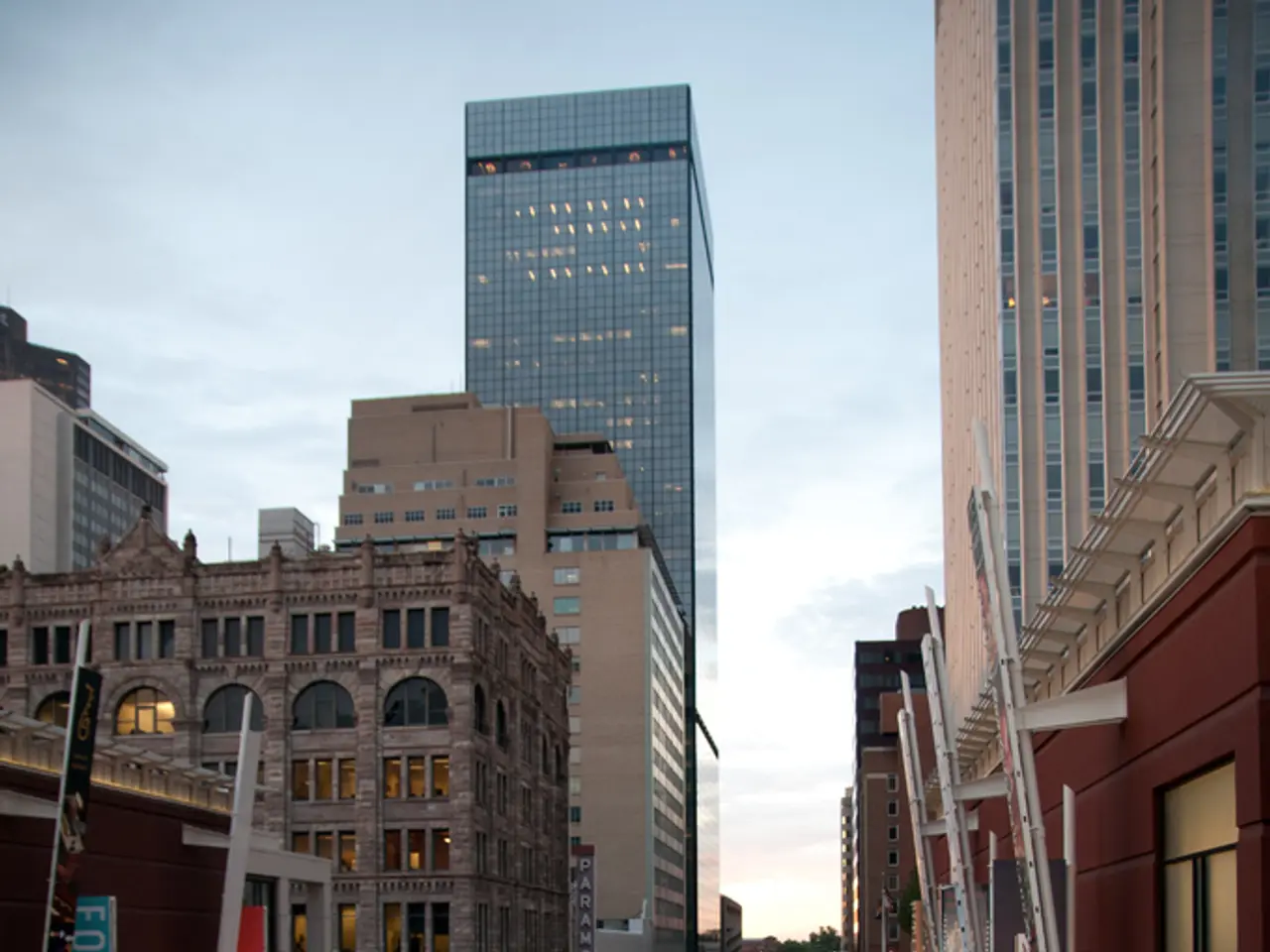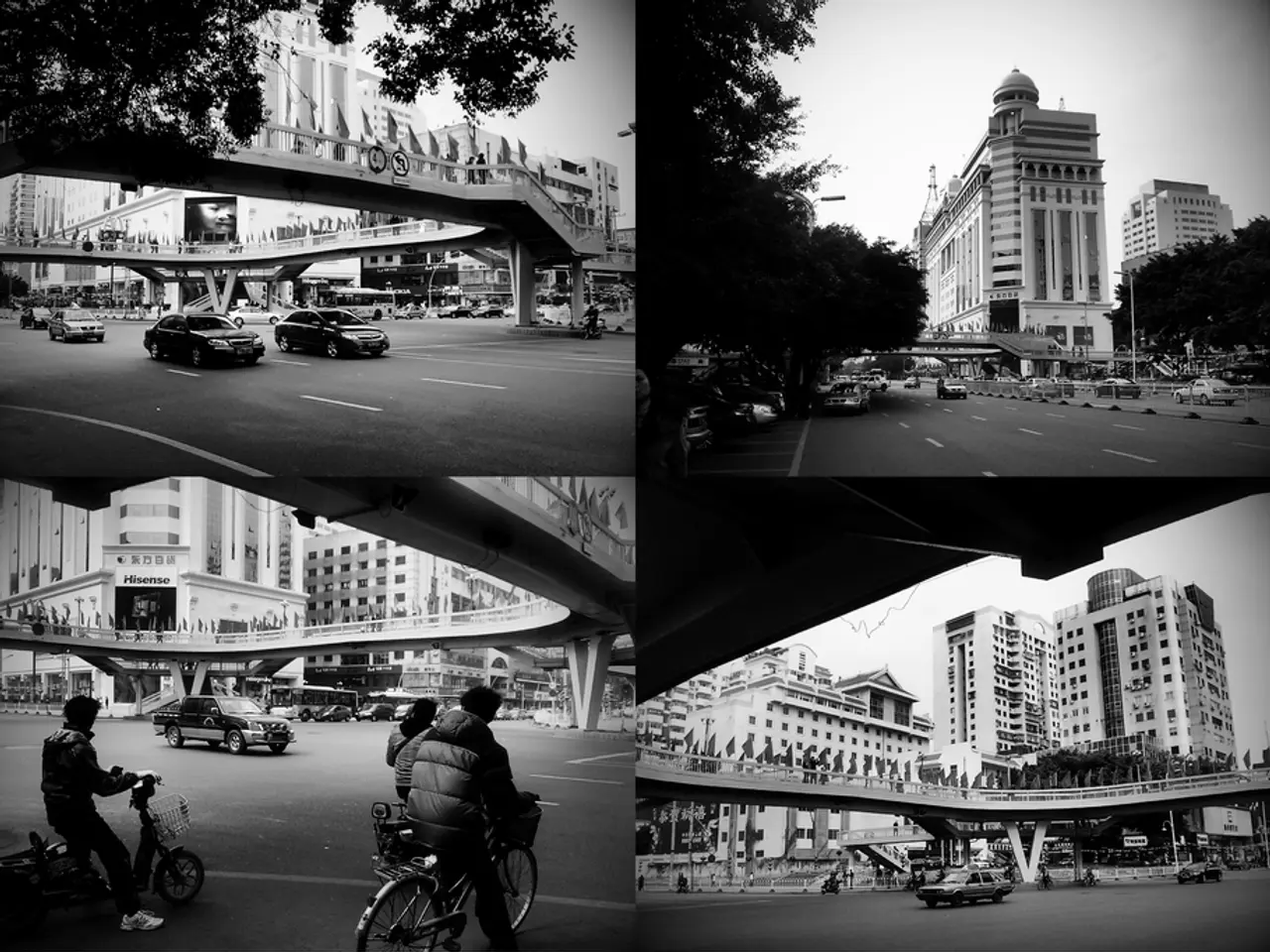Asia's City Transportation Evolution: A Journey Towards Sustainable, People-Focused Metropolises
In a bid to redefine how people move and live, Asian cities are embracing technology, collaboration with startups, and bold urban planning policies. Cities like Manila are adopting mixed-use urban designs, integrating residential, commercial, and recreational spaces to create more vibrant and resilient urban landscapes.
One of the key drivers of this transformation is the rise of startup ecosystems in Asia. For instance, SoftBank's Station Ai in Nagoya, Japan, is spearheading transportation innovation, capitalising on Asia's industrial strengths like manufacturing and automation. Toyota is also investing in Joby's air taxi technology for city-to-city transport, signalling a shift towards advanced urban mobility solutions.
The future of urban mobility in Asia is not limited to the ground. Emerging technologies like electric vehicles (EVs) and flying taxis are reshaping urban transportation. The ePlane Company, for instance, is developing electric Vertical Take-Off and Landing (eVTOL) aircraft, which can reduce congestion by providing low-emission air mobility in densely populated cities like Bengaluru.
Innovations in smart traffic management are also playing a crucial role. The Toyota Mobility Foundation's initiatives, such as the City Architecture for Tomorrow Challenge, focus on leveraging data to enhance transport resilience and efficiency in cities like Kuala Lumpur.
Startups are promoting electrified transport solutions, including EV charging stations and electrified rail systems, which help reduce pollution and dependency on fossil fuels. Green shipping corridors are another focus area for sustainable transport infrastructure, although specific initiatives in Manila or Bangkok may not be highlighted, the broader trend in Asia is towards sustainability.
Alternative modes of transport, such as enhanced public transit systems or bike-sharing services, are also being integrated into urban planning to reduce reliance on personal vehicles. Platforms like GRAB offer on-demand transport options that reduce the need for car ownership, optimizing energy use and alleviating congestion.
Infrastructure and urban planning are also undergoing significant changes. Deep tech infrastructure solutions, like those provided by Ackcio, are improving structural monitoring for critical infrastructure, reducing the need for costly retrofits and enhancing the resilience of urban infrastructure. Cities like Neom serve as models for sustainable urban planning with car-free zones and renewable energy, although replicating such models in existing megacities poses significant challenges.
However, implementing these innovations in existing megacities like Manila, Bangkok, or Bengaluru involves overcoming infrastructure, regulatory, and public acceptance hurdles. The massive investments in smart urban infrastructure and green buildings—projected to reach $60 billion in Southeast Asia over the next five years—offer substantial opportunities for startups and innovators to make a significant impact.
By 2050, Manila's population is expected to double, exacerbating issues like traffic congestion and long commutes, with some residents spending over three hours daily in transit. This paradigm shift includes expanding and modernizing public transportation systems, encouraging active transportation modes, supporting innovations in electric and autonomous vehicles, and strengthening policies that limit car dependency and promote shared mobility.
Electric scooters in India offer a practical, eco-friendly alternative for urban mobility, featuring swappable batteries and expanding battery-swap networks. Flying taxis in Japan promise to revolutionize city-to-city transport, drastically reducing travel times with their quieter, faster vehicles. Honda aims to capture corporate demand with battery-swap stations for electric vehicles.
The result will be cities that are not only more livable and sustainable but also economically dynamic and inclusive. The future of urban mobility in Asia is exciting, promising a shift towards a more efficient, sustainable, and people-centric urban environment.
[1] Source: The Straits Times, 2021 [2] Source: Forbes, 2021 [3] Source: The Toyota Mobility Foundation, 2021 [4] Source: McKinsey & Company, 2021
- The rise of Asian cities' startup ecosystems, such as SoftBank's Station Ai in Nagoya, Japan, is driving transportation innovation, utilizing the region's industrial strengths like manufacturing and automation.
- Electric vehicles (EVs) and flying taxis are shaping urban transportation, with the ePlane Company developing electric Vertical Take-Off and Landing (eVTOL) aircraft for low-emission air mobility in cities like Bengaluru.
- The Toyota Mobility Foundation's initiatives, like the City Architecture for Tomorrow Challenge, are using data to enhance transport resilience and efficiency in cities like Kuala Lumpur.
- Startups are promoting electrified transport solutions, like EV charging stations and electrified rail systems, to reduce pollution and dependency on fossil fuels.
- Alternative modes of transport, such as enhanced public transit systems or bike-sharing services, are being integrated into urban planning to reduce reliance on personal vehicles.
- Deep tech infrastructure solutions, like those provided by Ackcio, are improving structural monitoring for critical infrastructure, enhancing the resilience of urban infrastructure.
- By 2050, expanding and modernizing public transportation systems in cities like Manila, along with encouraging active transportation modes, will help alleviate traffic congestion and long commutes.
- The future of urban mobility in Asia will also see electric scooters in India offer a practical, eco-friendly alternative for urban mobility, while flying taxis in Japan promise to revolutionize city-to-city transport.
- Implementing these innovations in existing megacities will require overcoming infrastructure, regulatory, and public acceptance hurdles, but offers substantial opportunities for startups and innovators.
- The result will be economically dynamic and inclusive cities, promising a shift towards a more efficient, sustainable, and people-centric urban environment. [Sources: The Straits Times (2021), Forbes (2021), The Toyota Mobility Foundation (2021), McKinsey & Company (2021)]




